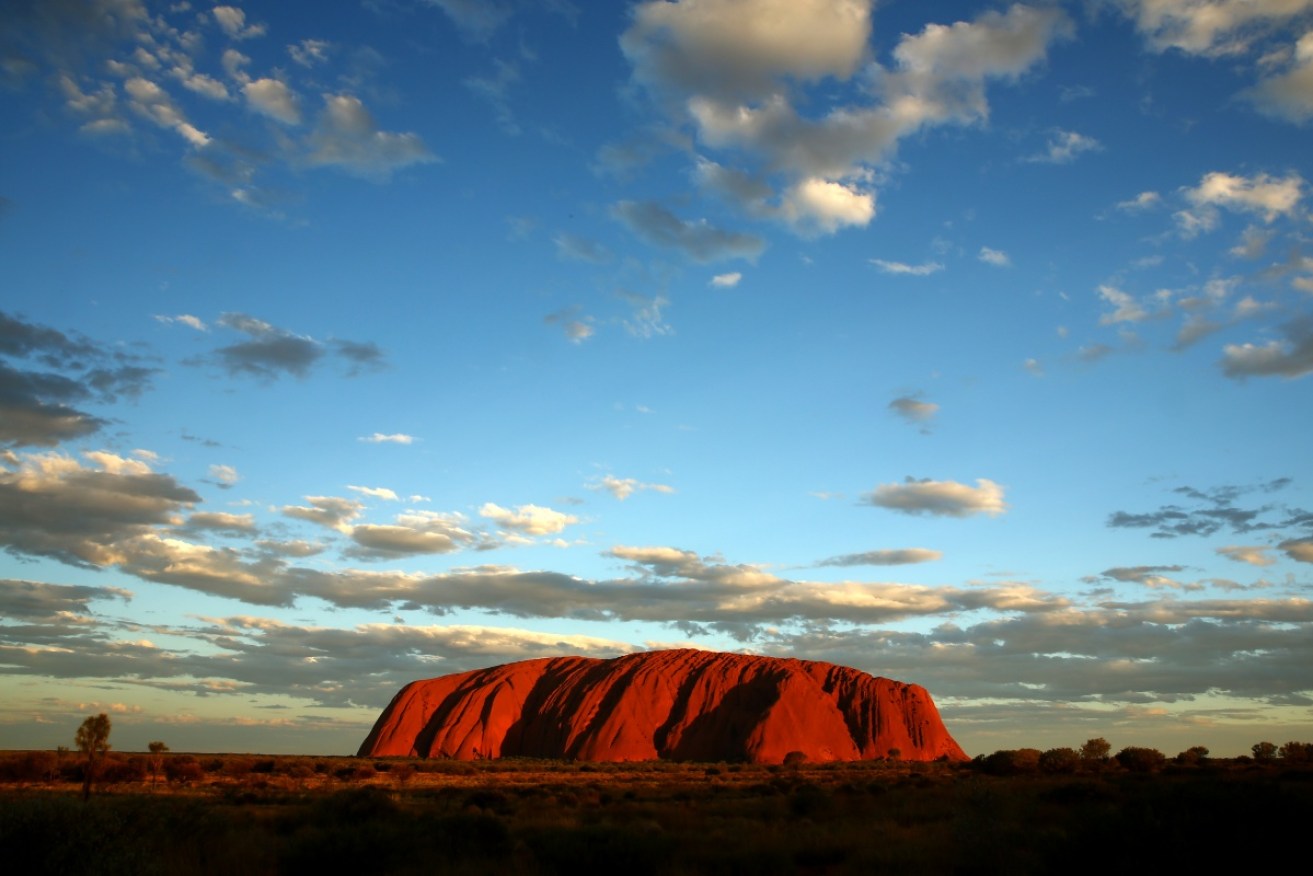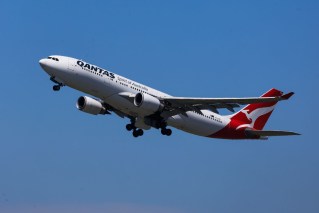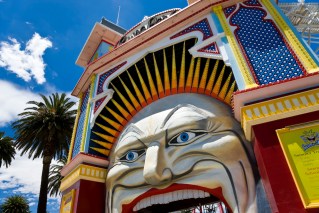15 tourist icons that live up to the hype (and three that don’t)

Prime Minister Scott Morrison has defended his absence from ceremonial events to mark the end of the Uluru climb, saying he can't be in two places at once. Photo: Getty
Much of the pleasure of travel is anticipation, so it can be a letdown when you discover the site you trekked hours to see isn’t picture-postcard perfect.
Travellers might cross the world to find Mount Fuji shrouded in clouds, the Twelve Apostles depleted in number, Copenhagen’s Little Mermaid is accurately named, Stonehenge has a barrier to keep visitors 10 metres away, and koalas are not exactly cuddly.
We’ve combed our travel archives to find destinations that are often even better than travellers expect.
Macchu Picchu, Peru
Whether you come on foot via the Inca Trail, by local or luxury train, or by bumpy bus, the five-century-old Incan city and UNESCO World Heritage Site is breathtaking.
Rediscovered by explorer Hiram Bingham in 1911, the mountainous village at 2430 metres where the Andes and the Amazon basin meet is considered the Incan empire’s greatest urban creation. If you have a big budget, staying at Belmond Sanctuary Lodge adjacent to the site will give you time there before and after the crowds have gone.

No matter how you get there, Machuu Picchu will impress. Photo: Getty
Basilica de La Sagradia Familia, Spain
Five generations have come and gone since work began on the massive Barcelona church that has been under construction for 136 years and which it is hoped will be completed during the first third of this century.
The great Spanish architect Antoni Gaudi spent 40 years designing it – only one tower was completed when he died in 1926 after being hit by a tram. If you don’t want to wait too long to see it, buy tickets online. No matter how much you anticipate walking in, the scale and architecture are astonishing.

Believe it or not, La Sagrada might soon be finished. Photo: Getty
Disneyland, US
Even hardened cynics come around to the charms of the beautiful gardens, adorable characters and totally immersive rides. Yes it’s expensive and crowded, but it’s SO MUCH FUN.
Big kids and little kids are unlikely to ever forget their first time riding with the Pirates of the Caribbean, Indiana Jones, Space Mountain or Matterhorn Bobsleds.
Busiest times to visit are June-September, Christmas and spring break. Tuesdays-Thursdays are quietest. Buy advance tickets and take advantage of the FastPass system to jump queues.

Channel your inner-child like never before at Disneyland. Photo: Getty
The French Quarter of New Orleans, US
It’s not often a place lives up to expectations down to the most minute details. New Orleans’ famous French Quarter is so like the version you see on postcards that it’s as if the streets have been art-directed.
Take one step inside the oldest part of NOLA and you’ll smell the beignets, hear jazz music trickling down from performers stationed on intricate balconies and laugh with eccentric locals enjoying an afternoon mint julep.
Food lovers will adore the authentic Cajun cuisine and the buttery pralines, which are a local speciality, while the more adventurous will get a rush out of a plantation or swamp tour where you can glimpse scenery straight out of a Hollywood film.
Finally, the spirit of the locals is electric and everywhere – from their late-night, sickly sweet cocktail-fuelled debauchery, to their obvious stoicism and resilience after enduring Hurricane Katrina.

The famous Bourbon Street, in New Orleans’ French Quarter. Photo: Getty
Fushimi Inari Shrine, Japan
Fast becoming one of the most-Instagrammed spots in the world, the Fushimi Inari shrine in Kyoto, Japan, is instantly recognisable thanks to its hundreds of vermillion gates, which are even more striking up close.
But the surrounding woodlands and mountain trails are arguably even better – leading you past makeshift temples, babbling creeks and incredibly tranquil hidden gardens.

Torii gates at the Fushimi Inari shrine in Kyoto. Photo: Getty
The Taj Mahal, India
The white marble mausoleum built by Mughal emperor Shah Jahan between 1632-1648 in Agra to honour his favourite wife, is the “the jewel of Muslim art in India”, according to UNESCO.
The symmetrical building is imposing from any angle (including the spot from which tourists take cheesy spire-pinching selfies).
The site encompasses 17 hectares of parkland on the banks of the River Yamuna, enough space for visitors to reflect in peace on this monument to love. The Indian government limits polluting industries for kilometres around to protects the shrine’s whiteness.

Taj Mahal doesn’t have a bad side – it looks good from all angles. Photo: Getty
Cappadocia, Turkey
This 300-square-kilometre landlocked region’s extraordinary geography is known as “fairy chimneys” – towering eroded pillars of eroded volcanic ash.
A civilisation has flourished here since the second millennium BC, and in the centuries since, people have dwelled in the countless caves, transformed them into churches, decorated them with frescoes, and most recently, turned them into extraordinary cave hotels. Wander towns like Goreme with its open-air museum, hike, take a hot-air balloon flight.

The caves of Goreme in Cappadocia. Photo: Getty
Lake Como, Italy
A handful of beautiful lakes punctuate northern Italy, but the villas of generations of rich and powerful people have made Como the belle.
Hike ancient footpaths, ferry between beautiful villages on the shores, explore grand gardens, take a speedboat to a lakeside lunch on local fish and, if it gets warm enough, take a swim.

Lake Como has good looks and plenty of Italian style to boot. Photo: Getty
The Great Wall, China
Built between the third century BC and the 17th century AD, the Great Wall covers 20,000 kilometres and, in the words of UNESCO is, quite simply, “a masterpiece”.
“The world’s largest military structure, its historic and strategic importance is matched only by its architectural significance,” the citation says, noting, however that, in places, tacky tourist traps have marred its purity.
How and where you see it will depend on your level of fitness, and the season. You can hike sections, but no, you can’t actually see it from space unless you have NASA-level equipment.

See the Great Wall from ground level, because space won’t cut it. Photo: Getty
Victoria Falls, Zambia
The Zambezi River thunders down a 100-metre drop to create the two-kilometre-wide falls, so powerful they often generate a cloud of vapour that can be seen from kilometres away.
From mid-August to mid-January, when water levels are lower, it is possible to walk along the lip of the falls, and bathe in The Devil’s Pool, which Zambian tourist authorities describe as “the ultimate infinity pool”.
They say you jump in and are pushed to the edge of the falls by the water’s flow. The more cautious may prefer to take in the wildlife attracted by the river: elephant, hippo, giraffe, zebra and monkeys, as well as the stunning scenery. The beautiful Royal Livingstone Hotel is worth a splurge if you can afford it.

Get your thrills at the Devils Pool. Photo: Getty
The Lincoln Monument, US
From his perch overlooking the Reflecting Pool at the end of Washington DC’s National Mall, and nearly six metres tall, Abraham Lincoln gazes across the American capital, the words of his famously inspirational Gettysburg address etched into the wall beside him, 36 Greek-style columns surrounding him.
It’s a stately, imposing place that silences visitors, making it easy to forget the bumps in the road to democracy that have been America’s recent presidential history.
It’s recommended you approach from the east, by the obelisk-like Washington Monument (closed until 2019 for repairs). The Lincoln Monument is open 24 hours. Go early or late to avoid the crowds.

President Abraham Lincoln has his own view of the US capital. Photo: Getty
Pompeii, Italy
The brothels are crowded at this site outside Naples, even though nothing saucy has happened there for nearly 2000 years.
In AD79, the eruption of nearby Mount Vesuvius buried the city, once home to 20,000 people, under volcanic ash. Two thousand lives were lost, but the city and the remains were preserved and protected until they were rediscovered by a canal digger in 1594.
Forty-four hectares have since been excavated. Travellers can wander the streets and lanes, poke their noses into bakeries, wonder at the mosaics and art. This is one of the world’s most extraordinary archaeological time capsules.

The Roman city of Pompeii was destroyed by a volcano in AD79. Photo: Getty
Yosemite National Park, US
Waterfalls, wildflower-filled meadows, giant sequoia trees, soaring peaks … Yosemite has them all.
“Not just a great valley, but a shrine to human foresight, the strength of granite, the power of glaciers, the persistence of life, and the tranquility of the High Sierra,” the US National Parks Service says.
Protected since 1864, the park’s 3000 square kilometres draw travellers from around the world. With this much space, though, it’s not hard to escape the crowds.

Get far from the madding crowd in Yosemite National Park. Photo: Getty
Iguassu Falls, Brazil and Argentina
More than 275 separate waterfalls make up Iguassu as it plunges through rainforest between Brazil and Argentina.
You’ll be passed by low-flying toucans, might have to swerve to avoid a tarantula marching across a road, and be guaranteed to get drenched as you wander the boardwalks that snake around The Devils Throat on the Argentine side. On the Brazilian side, you’ll feel like you can touch the falls.
Two great hotels are very close: The Melia Iguazu in Argentina, the Hotel das Cataratas in Brazil.

Dodge the local wildlife on the way to Iguassu Falls. Photo: Getty
Great Pyramids of Giza and the Sphinx, Egypt
One of the seven wonders of the world, Egypt’s famed Great Pyramid can also be a bit of a nightmare to visit for the underprepared. It’s crowded, hot and overwhelming, prepare to be accosted by trinket sellers and tour guides.
However, the sheer grandeur and history of the Pyramids and the Great Sphinx are capable of drowning it all out. Just ensure you arrange a local guide ahead of time to skip the confusion.
A hot tip: the Marriott Mena House hotel has close-up views of the pyramids without the crowds. Even if you don’t want to stay there, opt to dine at the outdoor restaurant so you can absorb the spectacle without any of the stress.

Enjoy a world-class view of the pyramids without the crowds. Photo: Getty
And three travel icons that don’t deliver
It’s not their fault–human intervention and tourism have taken these three experiences and changed them for the worst.
Climbing Uluru, Australia
It’s steep, challenging and, at times, scary, and those aren’t the main reasons ascending Uluru is ultimately unrewarding. The view from the rock is nothing compared to the superb view of the rock, for starters.
But more importantly, the traditional owners ask visitors not to climb the rock – and climbing will be banned altogether from October 26, 2019. Don’t think you’re missing anything by complying.
You can bus into the desert to dine under the stars, gather with the crowds to watch the sun set or rise, take scenic flights or camel tours.
But the richest experiences to be had here can be the simplest. The 10.6-kilometre circuit of Uluru’s base will likely give you a three-and-a-half hour private audience with the red monolith and its many moods.

Uluru’s beauty can be appreciated from ground level. Photo: Getty
The Blue Grotto, Italy
The Isle of Capri’s most famous attraction is a 54-metre by 30-metre cave with a 1.3-metre entrance from the sea: this is where the light gets in, and what gives the water inside a jewel-like glow that Lonely Planet describes as “bewitching”.
You’ll likely spend longer queueing to enter the boat-crowded cave while lying down in a dinghy than you do actually in there, swimming is forbidden (though we’ve seen people jump overboard) and tourist hordes probably rob the spot of some of the allure it had when Roman Emperor Tiberius enjoyed it around AD30.

The Blue Grotto is a crowded ho-hum. Photo: Getty
Carcassonne, France
To be fair, the historic fortified hilltop city – largely dating from mediaeval times but with some Roman remnants – is a stunning sight.
But during the day, especially in warmer weather, an extraordinary number of tacky tourist ventures, souvenir stands and crowds mar the experience and rob the UNESCO world heritage site of its dignity. Late night and early morning visits help to give it some back.

The old city is beautiful, but the souvenir stalls and crowds less so. Photo: Getty








